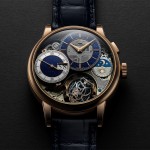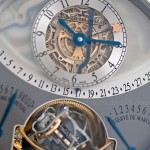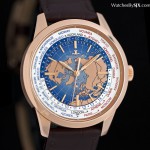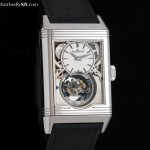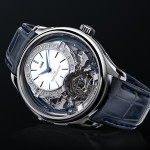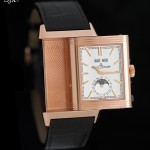Up Close: Jaeger-LeCoultre Gyrotourbillon 3 Meteorite
Exotic inside and out.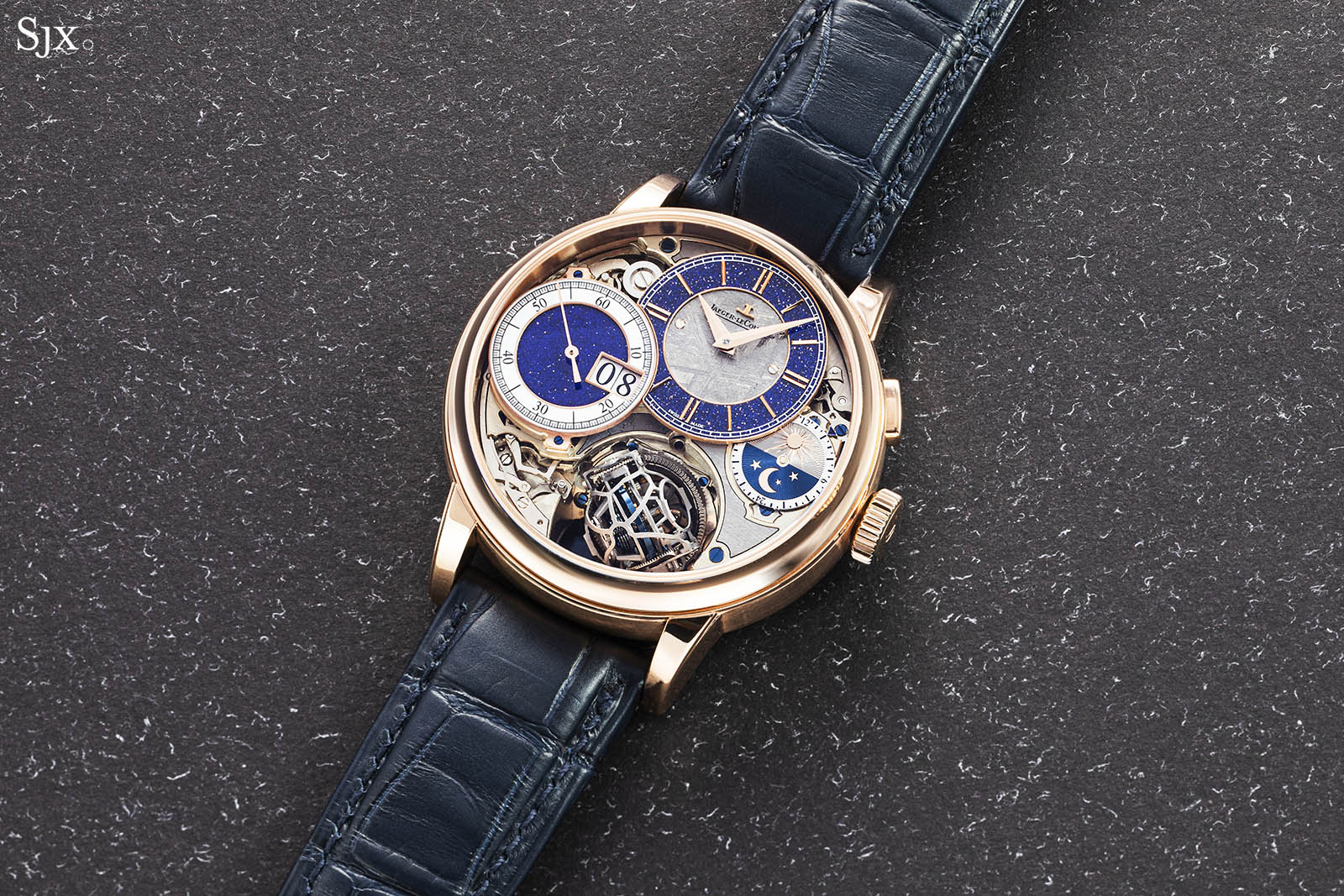
The Jaeger-LeCoultre Gyrotourbillon 3 Meteorite is a highly technical yet decorative grand complication panelled in meteorite and aventurine. But it also evokes watchmaking of the early 2000s in its mechanical grandeur.
Exotic tourbillons started to proliferate at the turn of the millennium, and soon the offerings were numerous, ranging from orbital to inclined to multi-axis. Today such tourbillons are commonplace, but in the early 2000s they were radical and cutting edge.
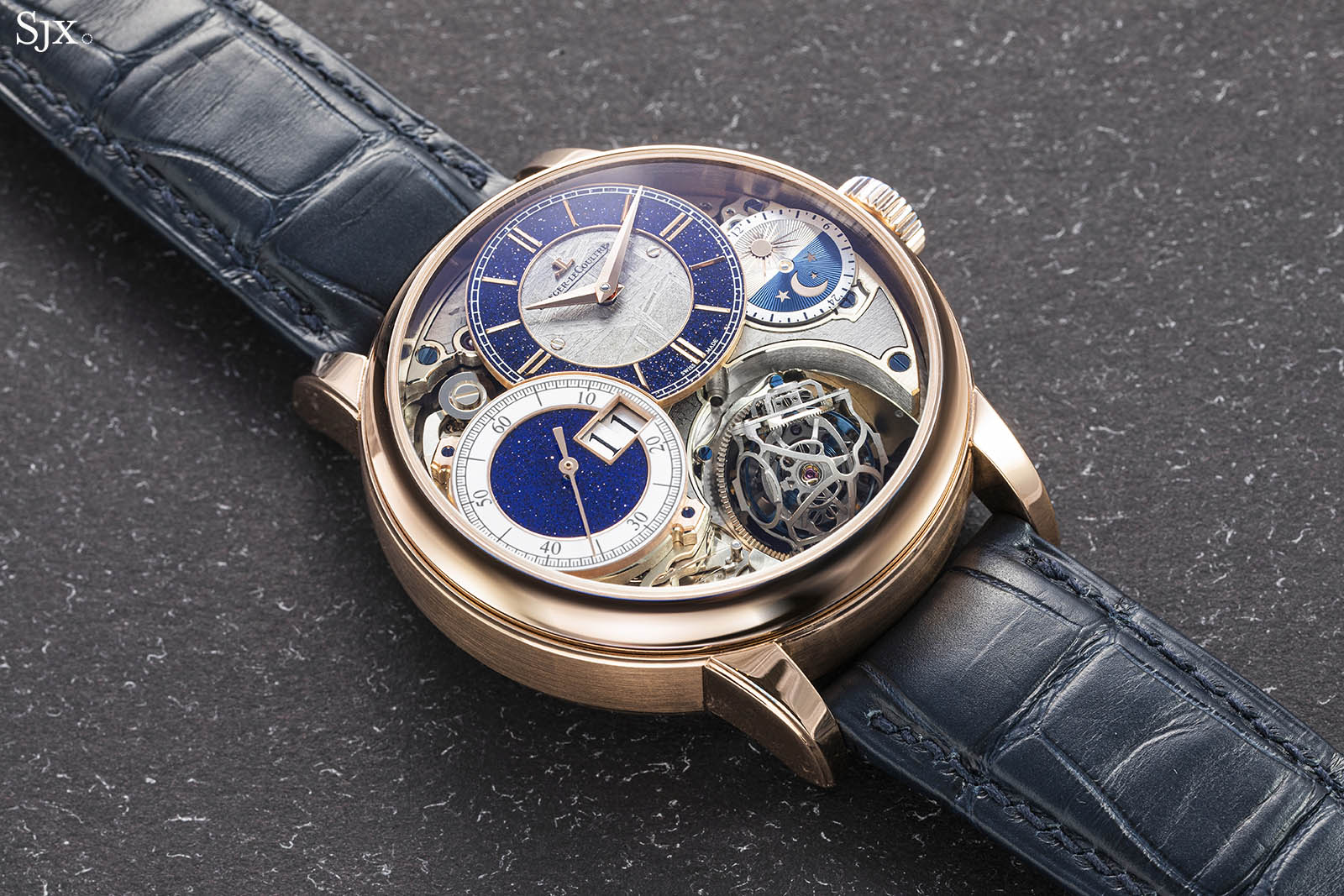
While the orbital tourbillon was nothing more than a visual spectacle, the inclined and multi-axis tourbillons were attempts to adapt Breguet’s invention for the wrist, in other words they made chronometric sense, at least on paper.
One of the earliest and most significant multi-axis tourbillons was the Jaeger-LeCoultre Gyrotourbillon of 2005. While it wasn’t the first multi-axis tourbillon in a wristwatch – that honour goes to Thomas Prescher – the Gyrotourbillon was distinguished by its elaborate, three-dimensional cage of lightweight aluminium, made possible only with the aid of modern technology.
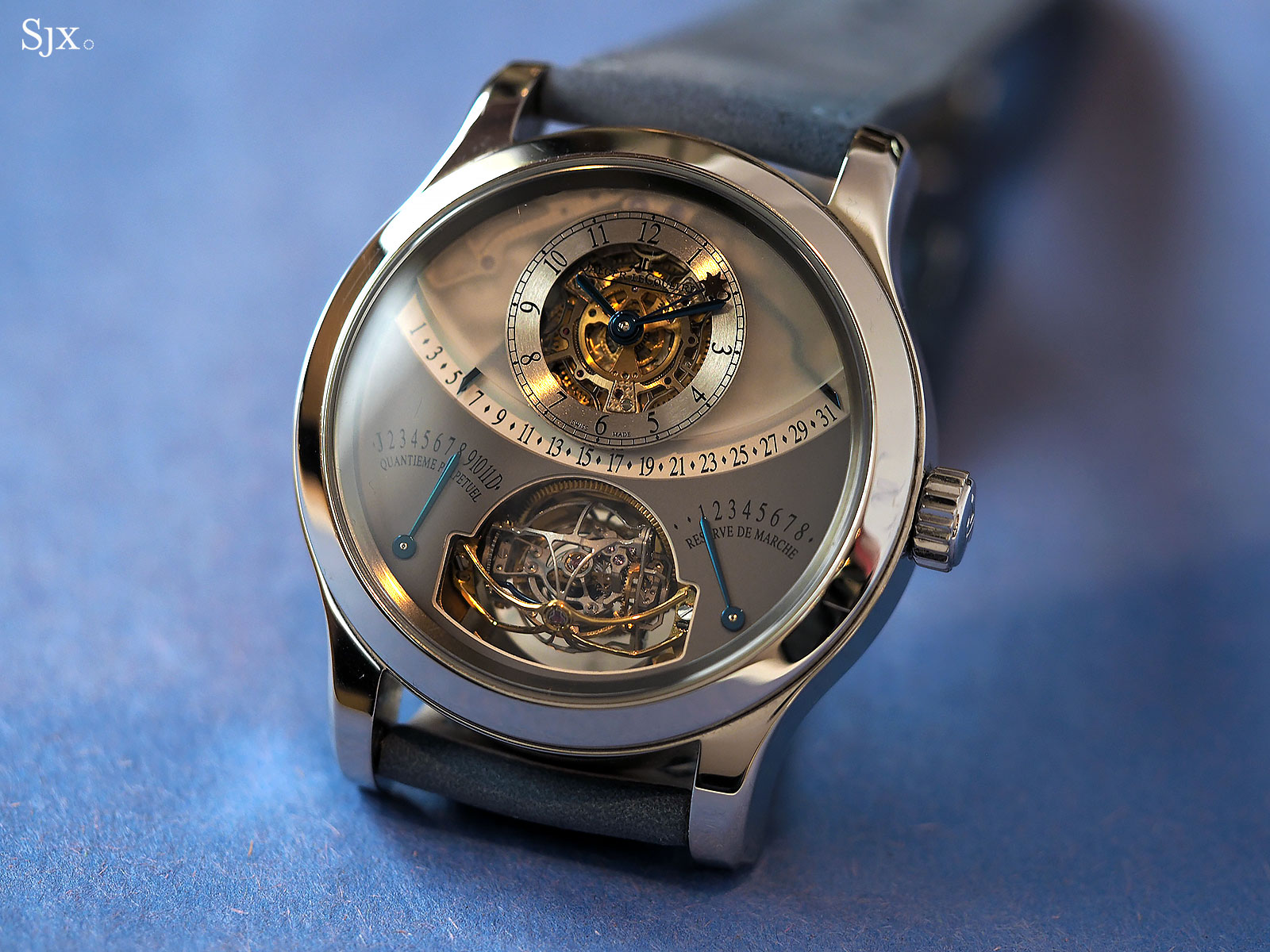
The original Gyrotourbillon of 2005, which also incorporated a perpetual calendar with equation of time
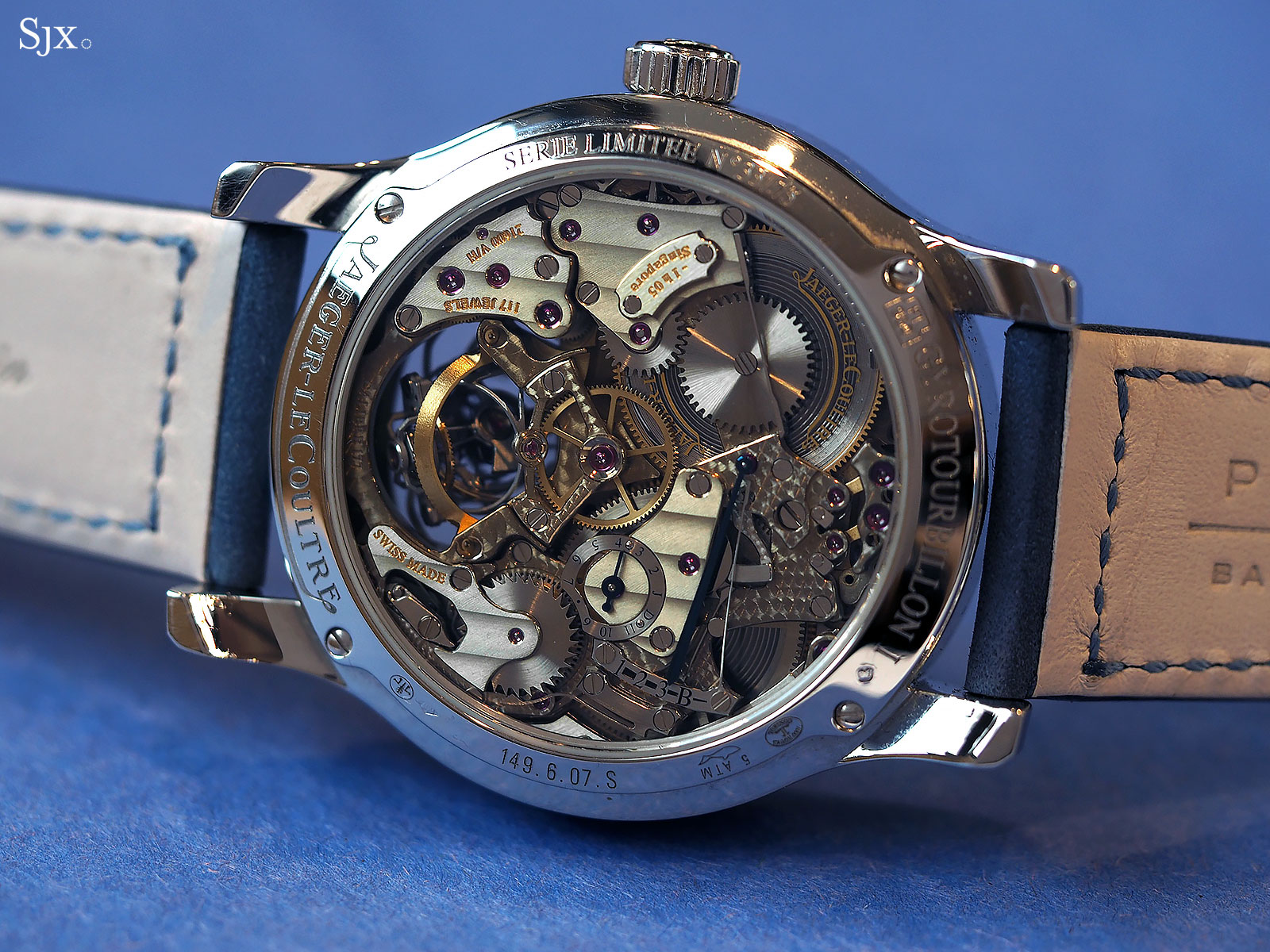
With the leap year and power reserve displays on the back
The Gyrotourbillon was arguably the complication that defined Jaeger-LeCoultre as an haute horlogerie brand rather than a movement maker for other marques. Since its launch the Gyrotourbillon evolved into several iterations, including this year’s Master Grande Tradition Gyrotourbillon Westminster Perpétuel unveiled earlier in the year.
And the Gyrotourbillon 3 Meteorite is yet another iteration.
Exotic materials
Launched in 2013 to mark the brand’s 180th anniversary, the Gyrotourbillon 3 has an unusual combination of complications: double-axis tourbillon, monopusher chronograph with a digital, instantaneous 60-minute counter as well as a day and night indicator. As a result, it is substantially sized – though none of the round Gyrotourbillons were ever small – measuring 43.5mm wide and 15.8mm in height.
While the launch version was in platinum, this iteration is in pink gold, giving it a warm and slightly more luxe look. And it remains surprisingly useable for such a complicated watch, with the chronograph and time display being easily readable.
The case finish helps alleviate the size, with a brushed case band and a wide, sloping, concave bezel, which give the illusion of a flatter case.
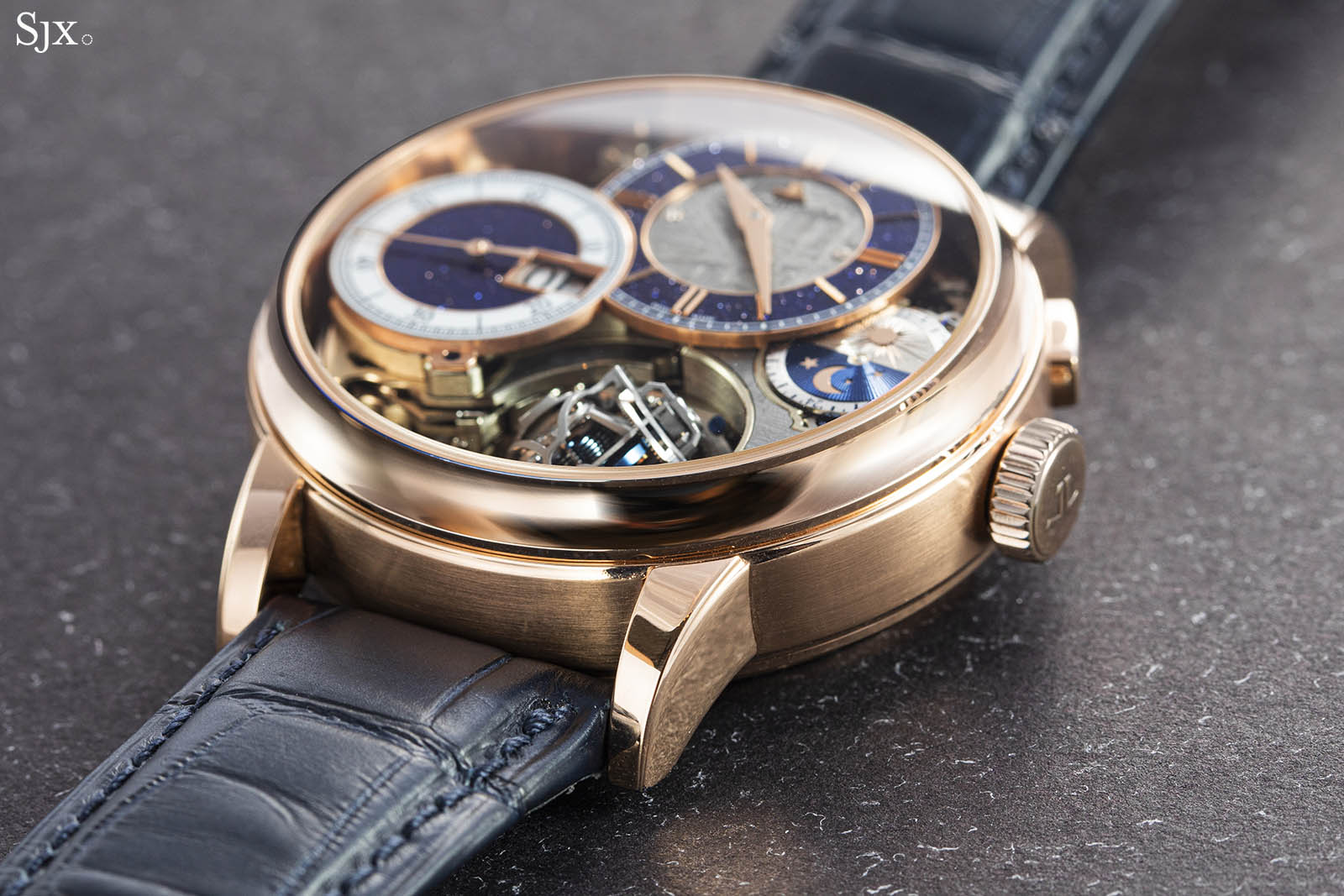
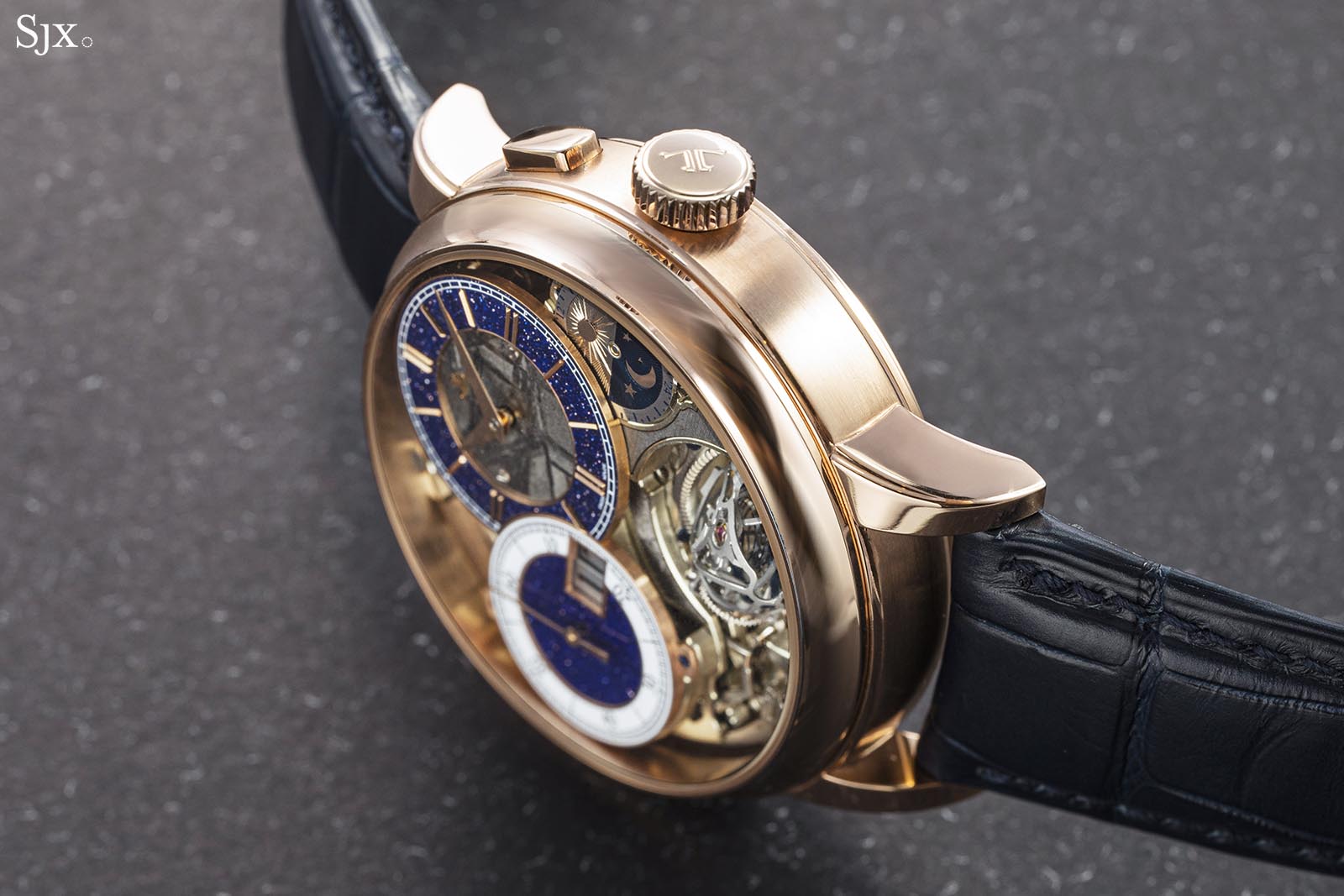
The watch’s multi-layered dial is rather characteristic of the 2000s, featuring three sub-dials that overlap but are visually distinct due to the materials, which are all extravagant.
The hour-and-minutes sub-dial at 12 o’clock features a meteorite center framed by a chapter ring made of aventurine glass, which creates a striking contrast against its pink gold indices and hands.
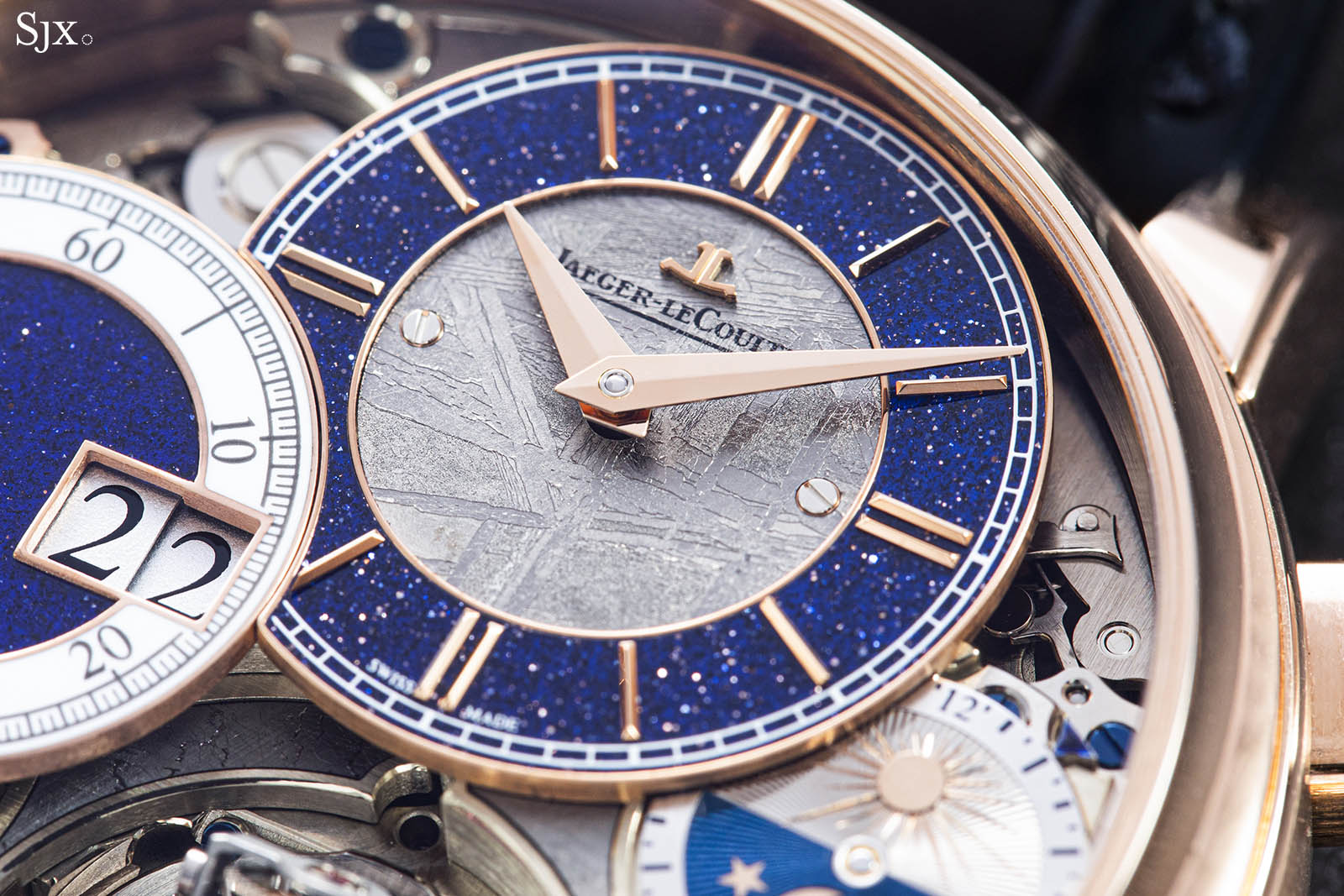
On its left is the chronograph counter with an aventurine centre, surrounded by a white, fired enamel ring. And within a small gold frame is the digital minute counter for the chronograph.
And at three o’clock is the day and night display that is finished with hand-guilloche, with both the sun and moon in solid pink gold.
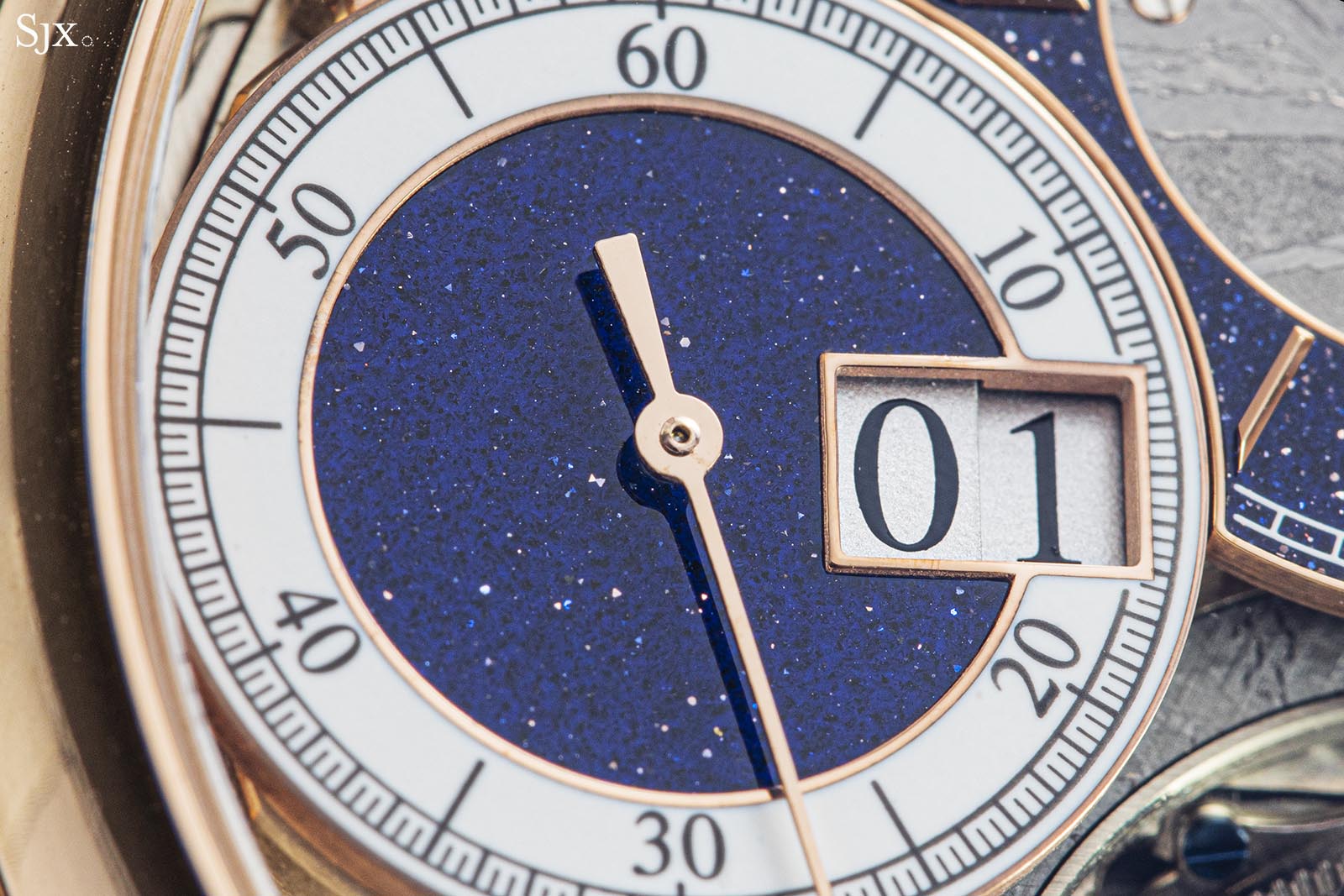
The chronograph register
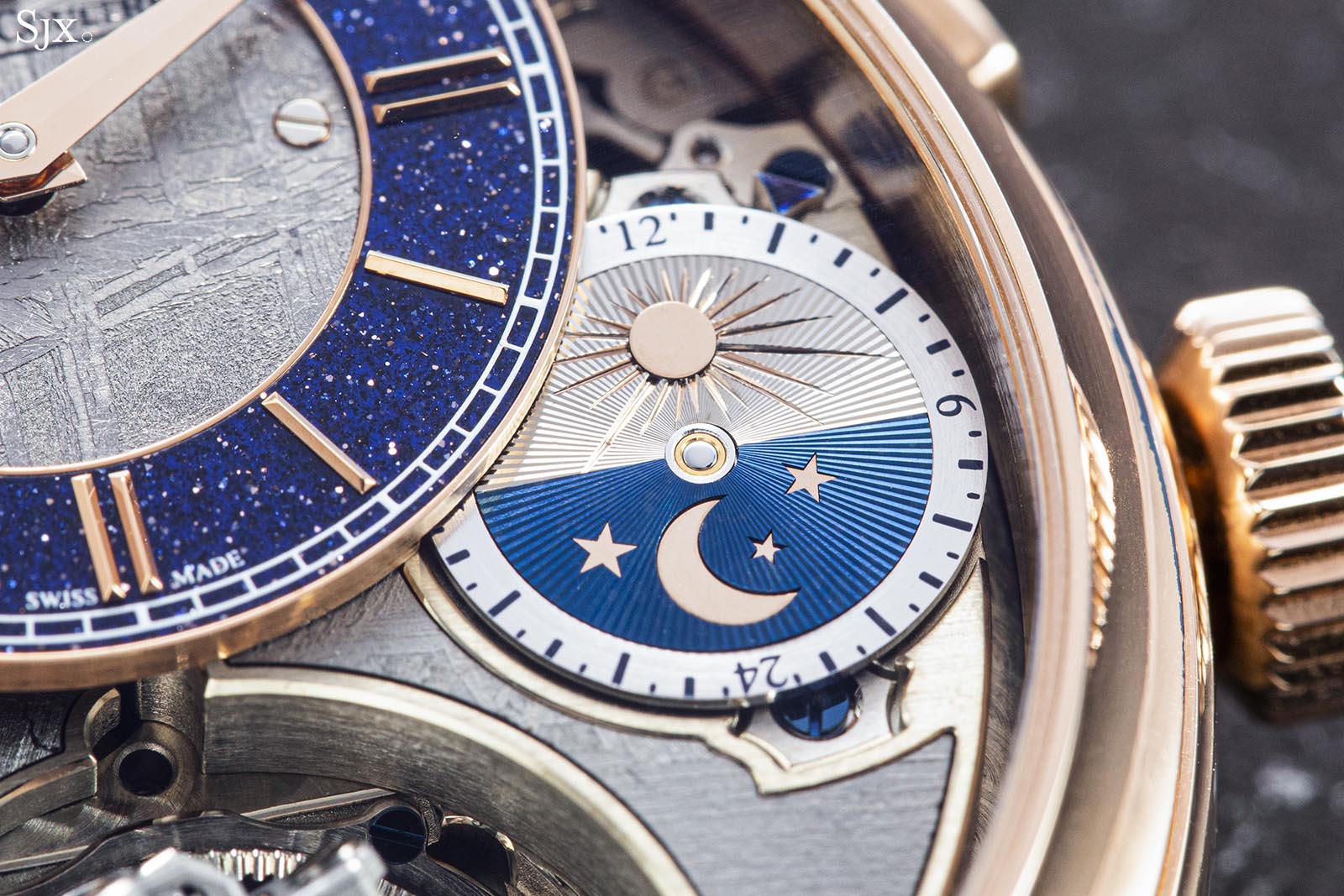
And the day-night display
Visible on both the front and back of the movement are meteorite panels inlaid on German silver bridges, creating an unusual yet appealing contrast.
Like a majority of meteorite used for watch dials, the meteorite here is an octahedrite, or iron meteorite, sourced from Namibia. Such meteorites are composed of over 90% iron, with the rest being nickel and small amounts of other heavy metals.
A mottled grey in its natural state, the meteorite sliced into thin pieces and then chemically etched to accentuate the complex Widmanstätten pattern that comes from the iron and nickel crystals inside.
While meteorite is an attractive material – explaining why it is a favourite of watchmakers – it is essentially a rock and cannot be cut with the same precision as the German silver bridges, which means the inlaid meteorite panels are not an exact fit for the recesses on the bridges.
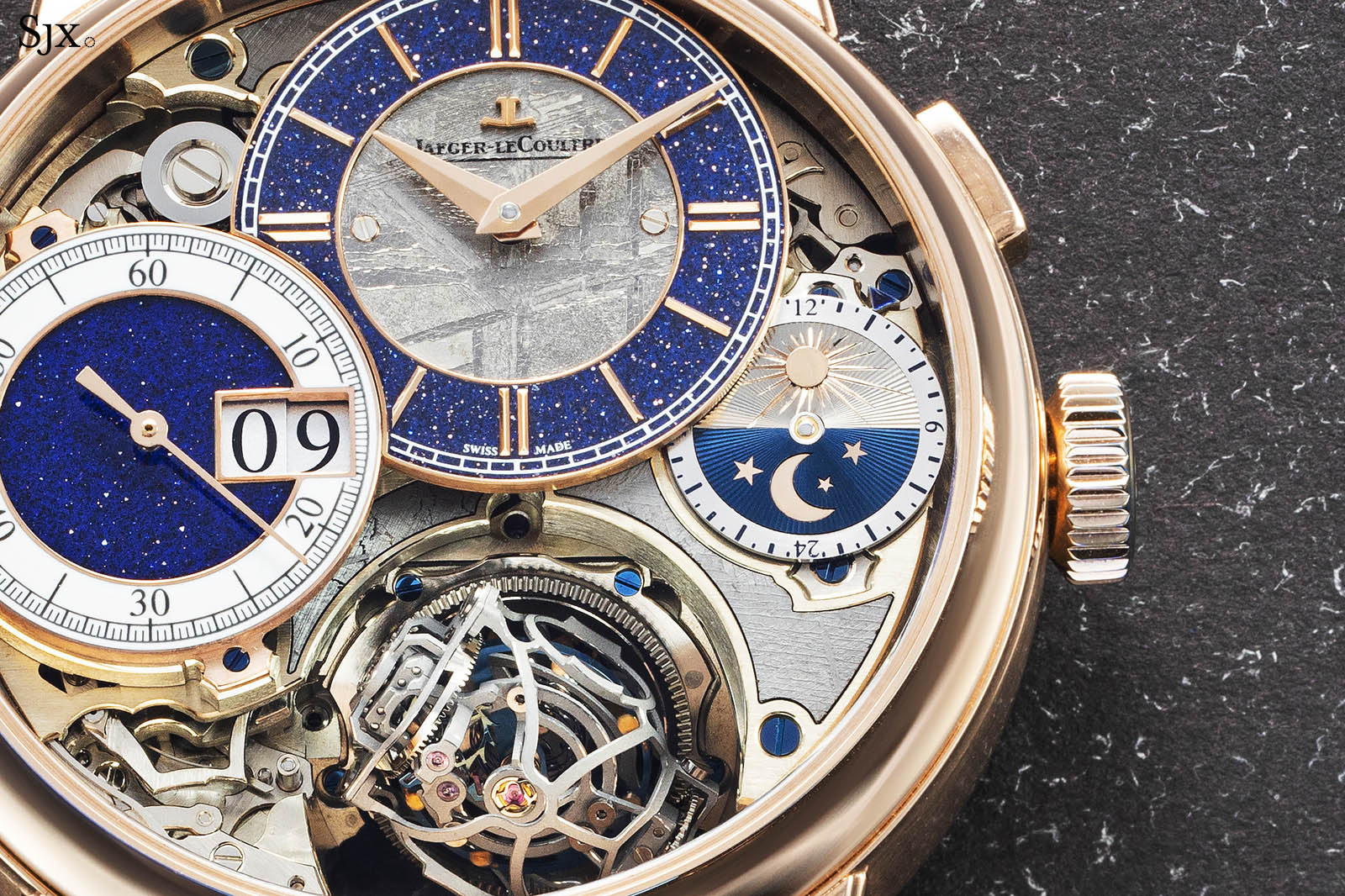
The multi-axis tourbillon
At six o’clock is the Gyrotourbillon that has two spherical, aluminium cages rotating in opposing directions and at different speeds. It is arguably the ultimate version of the Gyrotourbillon.
But first, a brief primer on the rationale behind the concept. While a conventional, single-cage tourbillon has one fixed wheel, a bi-axial tourbillon has two fixed wheels as it rotates across two planes simultaneously like a gyroscope. Because of the gearing, the internal cage operates at a higher speed, making 2.5 rotations per minute while the external carriage makes one rotation per minute.
All of that is meant to compensate for errors in rate due to gravity while the watch is in a constantly changing position on the wrist. At least that’s the theory behind it, but in any case the Gyrotourbillon is a compelling thing to watch.
One element that sets the Gyrotourbillon apart from its peers, even today, is the three-dimensional carriage that finished in a granular sandblasting. But while the general appearance of the Gyrotourbillon has remained consistent, it has evolved substantially since 2005.
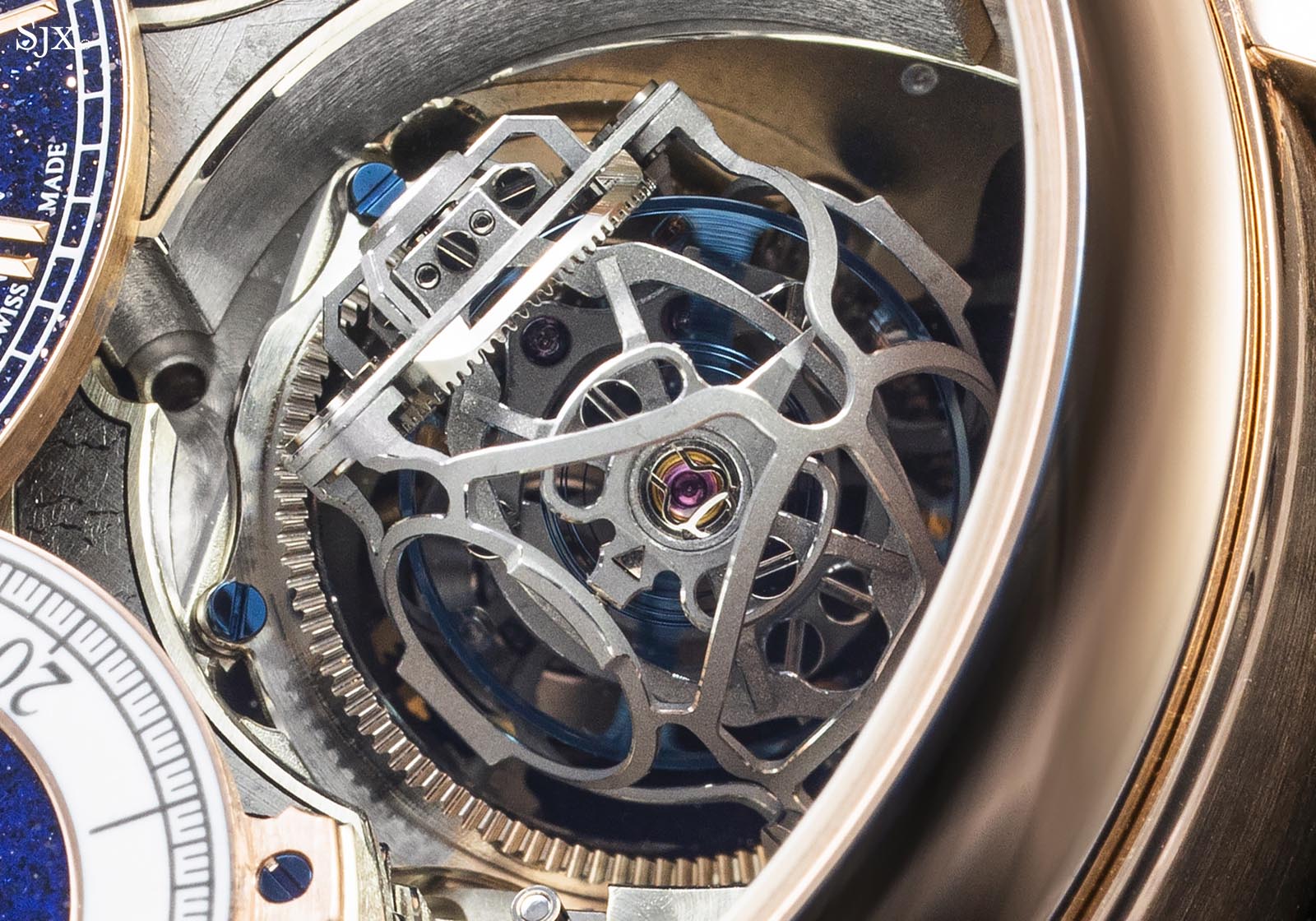
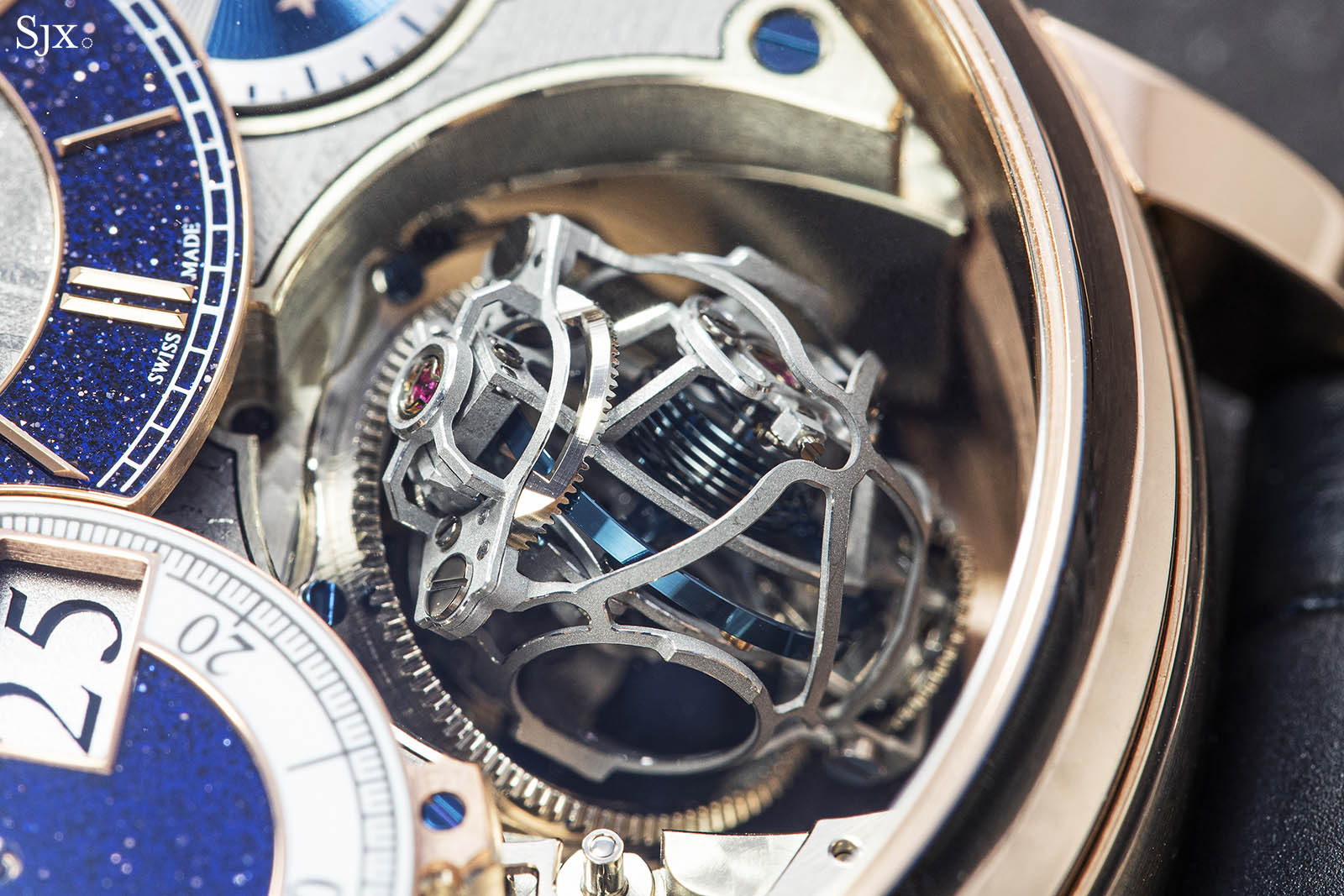
Evolved to perfection
The Gyrotourbillon 1 had an ordinary flat hairspring, the second version a cylindrical hairspring, and the final model a spherical hairspring, thought to be the most optimal shape for isochronism.
The hairspring is blued and fixed to the center of a blued solid gold balance wheel, achieved by PVD-coating it with iron, followed by oxidisation.
Besides the hairspring, Gyrotourbillon 3 is also unique in being the first and only flying Gyrotourbillon, without a visible tourbillon bridge.
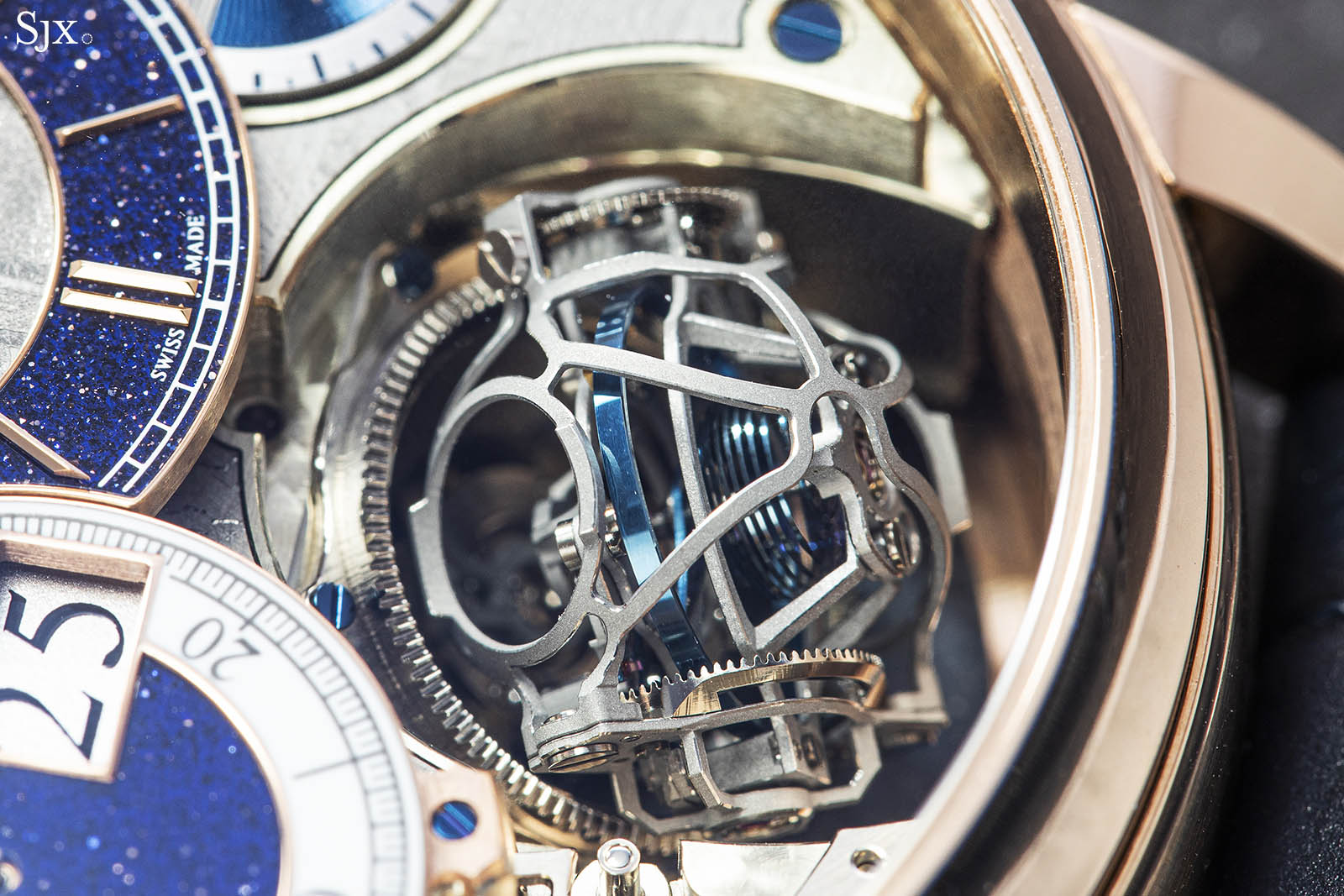
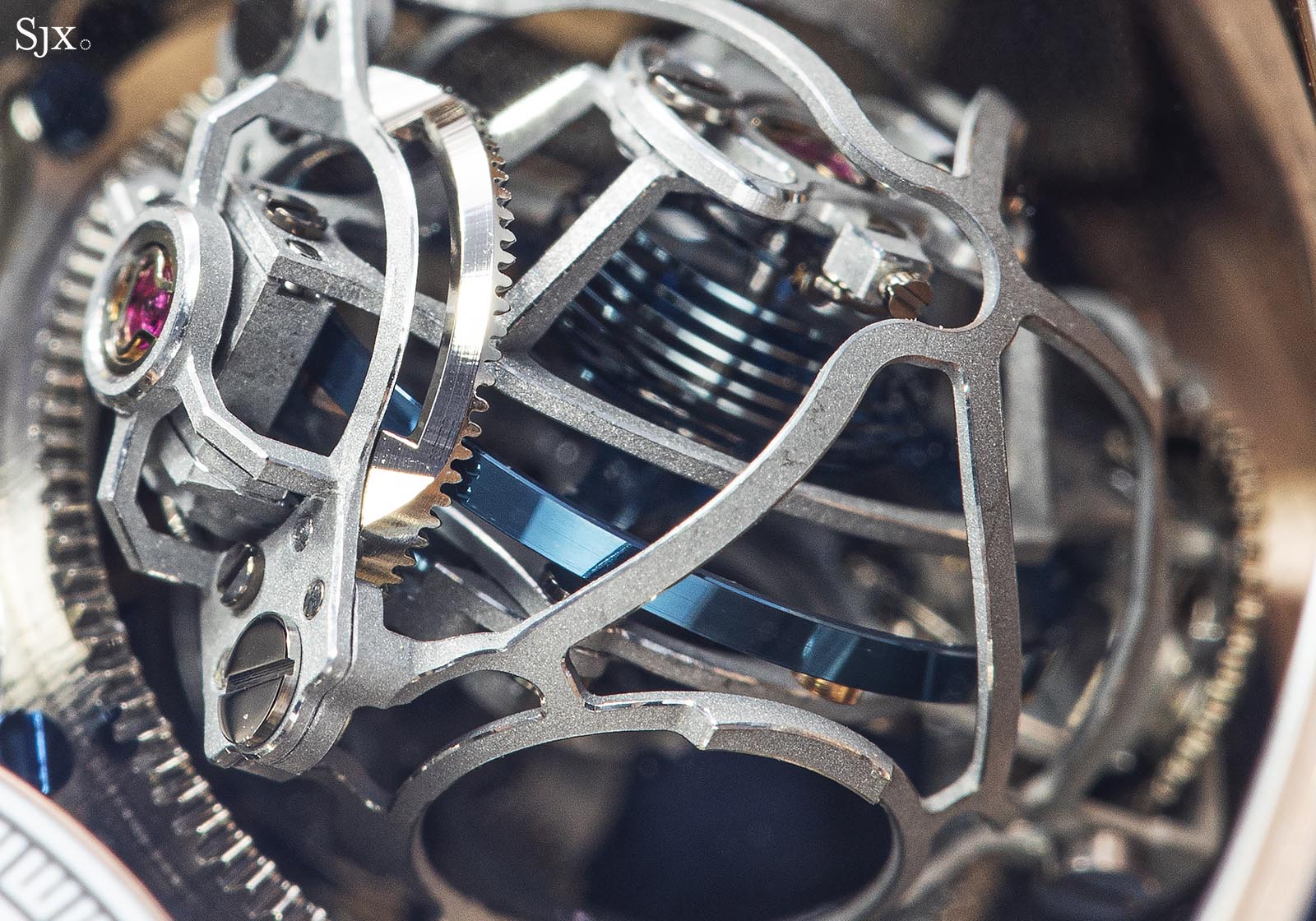
And the Gyrotourbillon 3 is enhanced by a compact, single-button chronograph mechanism that is equipped with a column wheel, capped with a steel disc and visible just above the chronograph counter, and a vertical clutch.
Moreover, it is a digital chronograph, with the minutes displayed in a window with two instantaneous jumping discs – one for the units and the other for the tens. The chronograph is smartly executed and instantly legible.
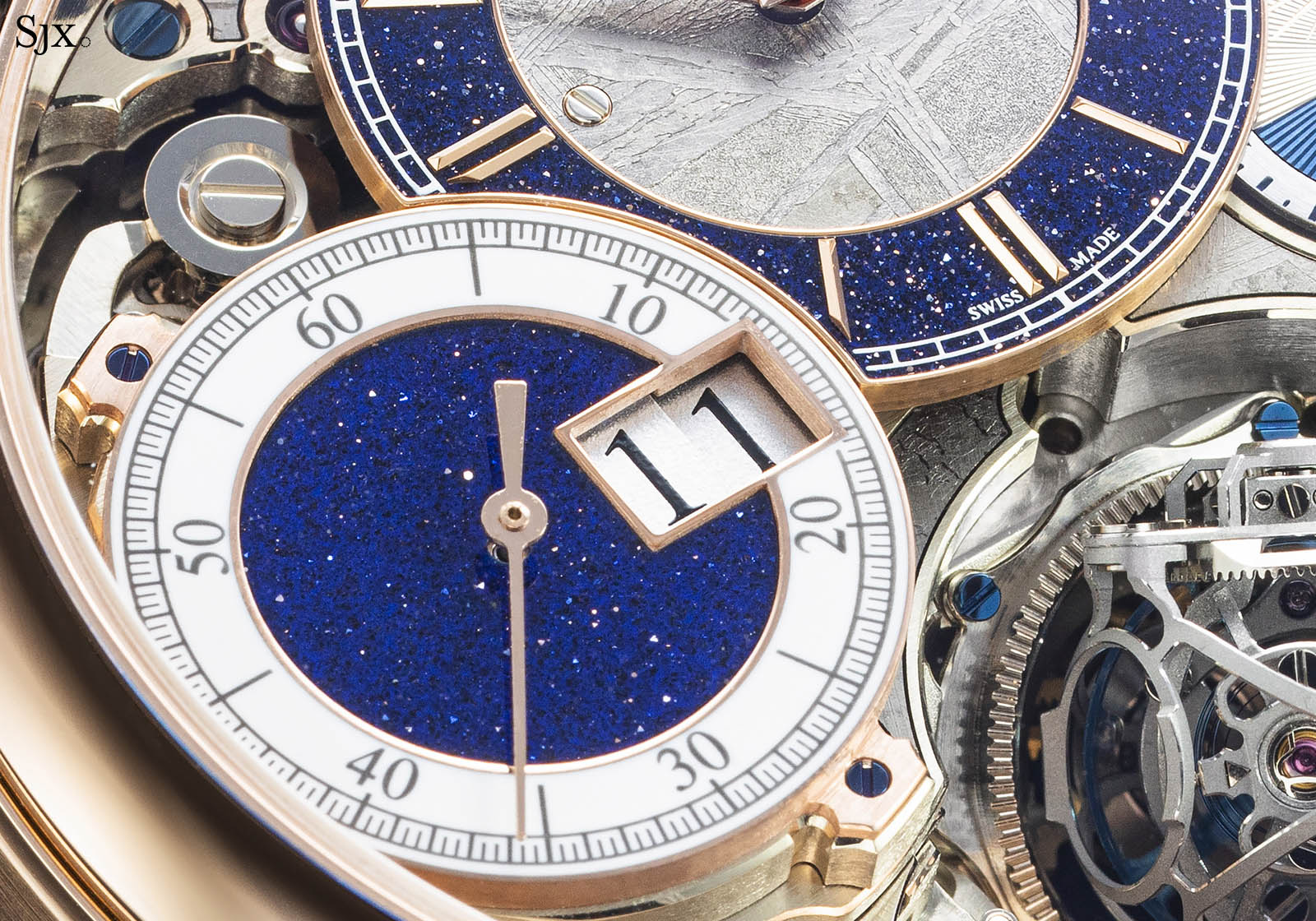
Complex calibre
With all that going on, it is no surprise that the cal. 176 inside is made up of 592 components – comparable to minute repeater with tourbillon and perpetual calendar – including double barrels that offer a 45-hour power reserve.
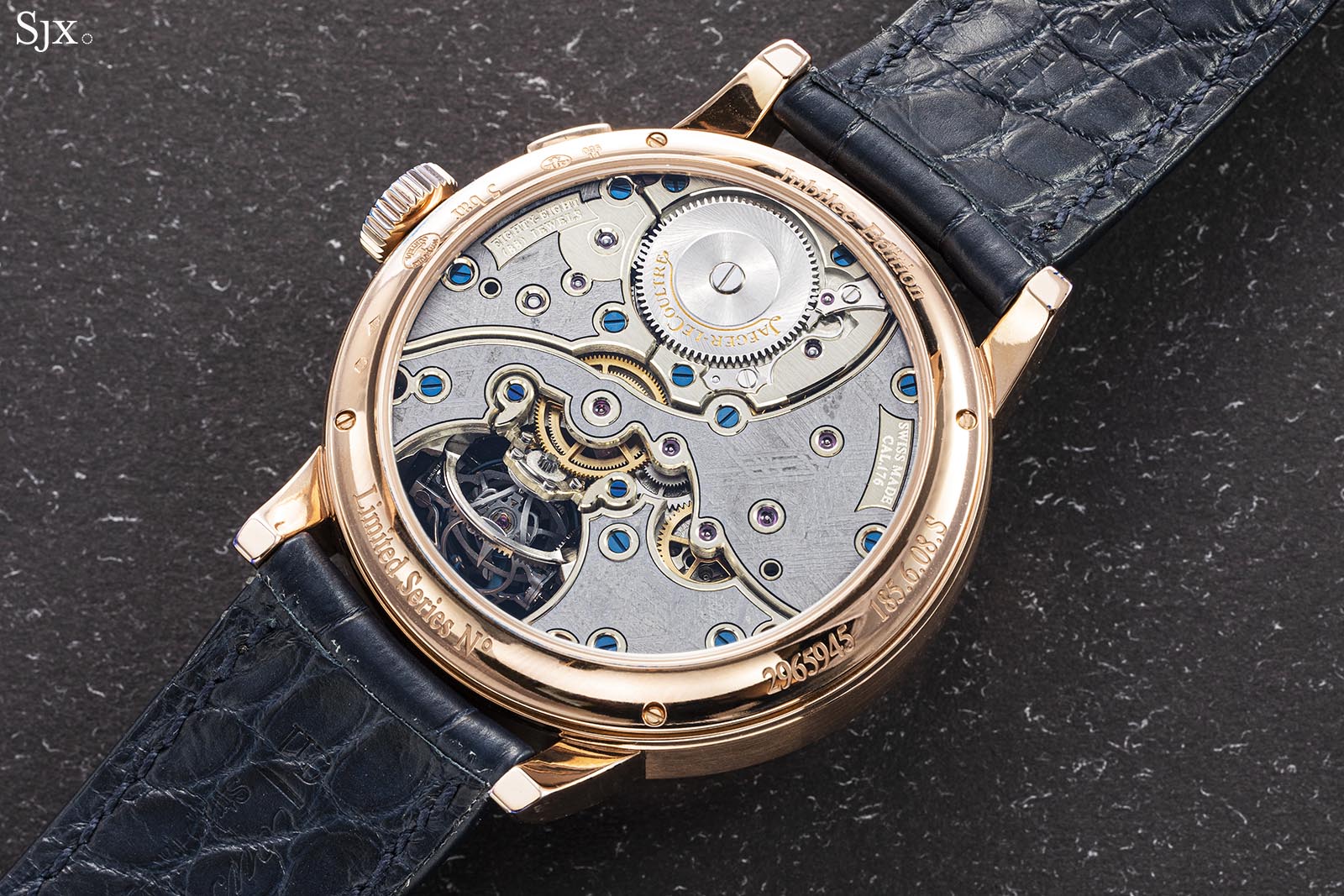
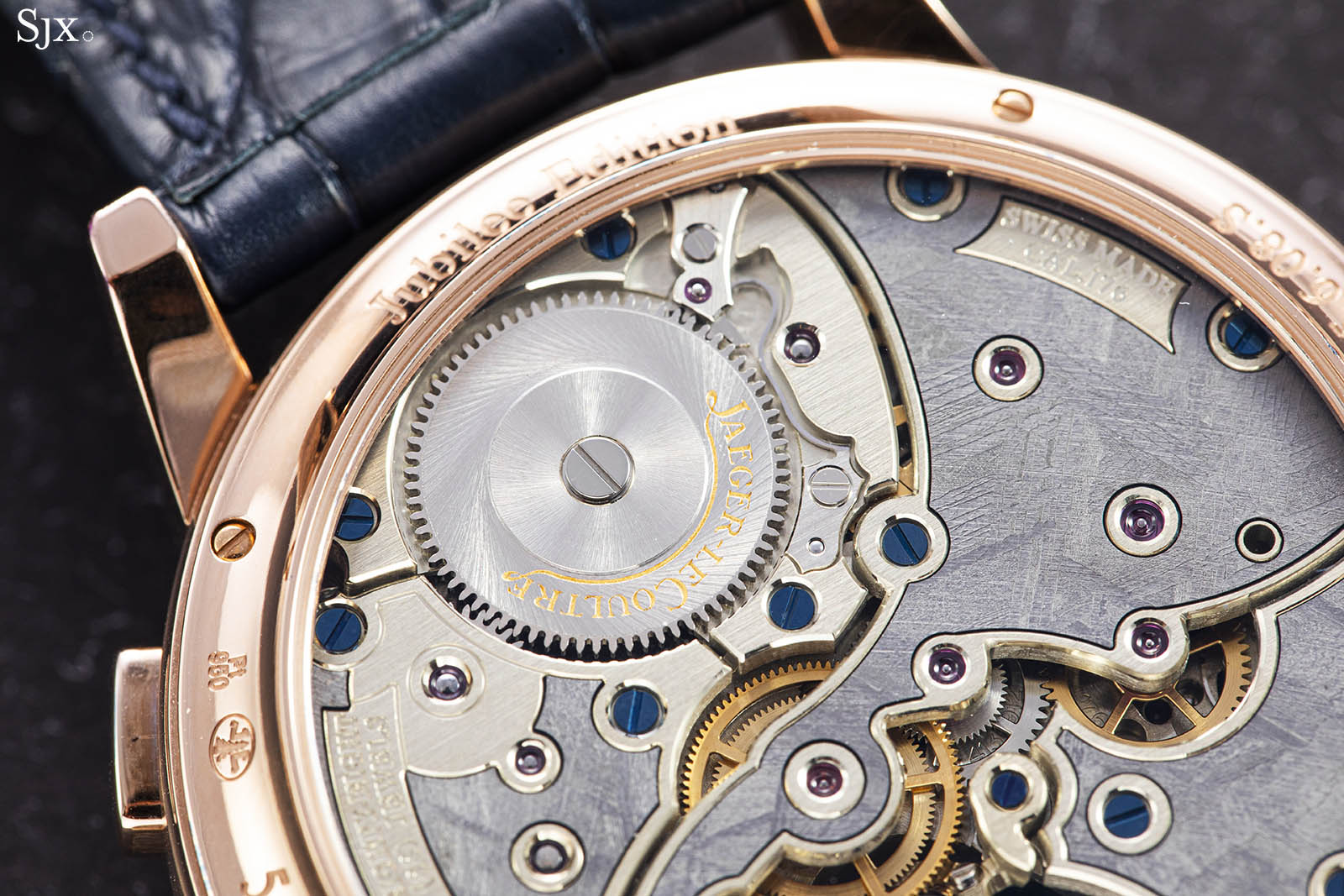
The movement is carefully decorated, with attention paid to details like the polished countersinks for the jewels and screws. But it is simply finished, with straight graining and narrow bevelling on the bridges. And certain details are not quite refined to the utmost, for instance the rounded inward – as opposed to sharp – corners on the inside rim and spokes of the gears.
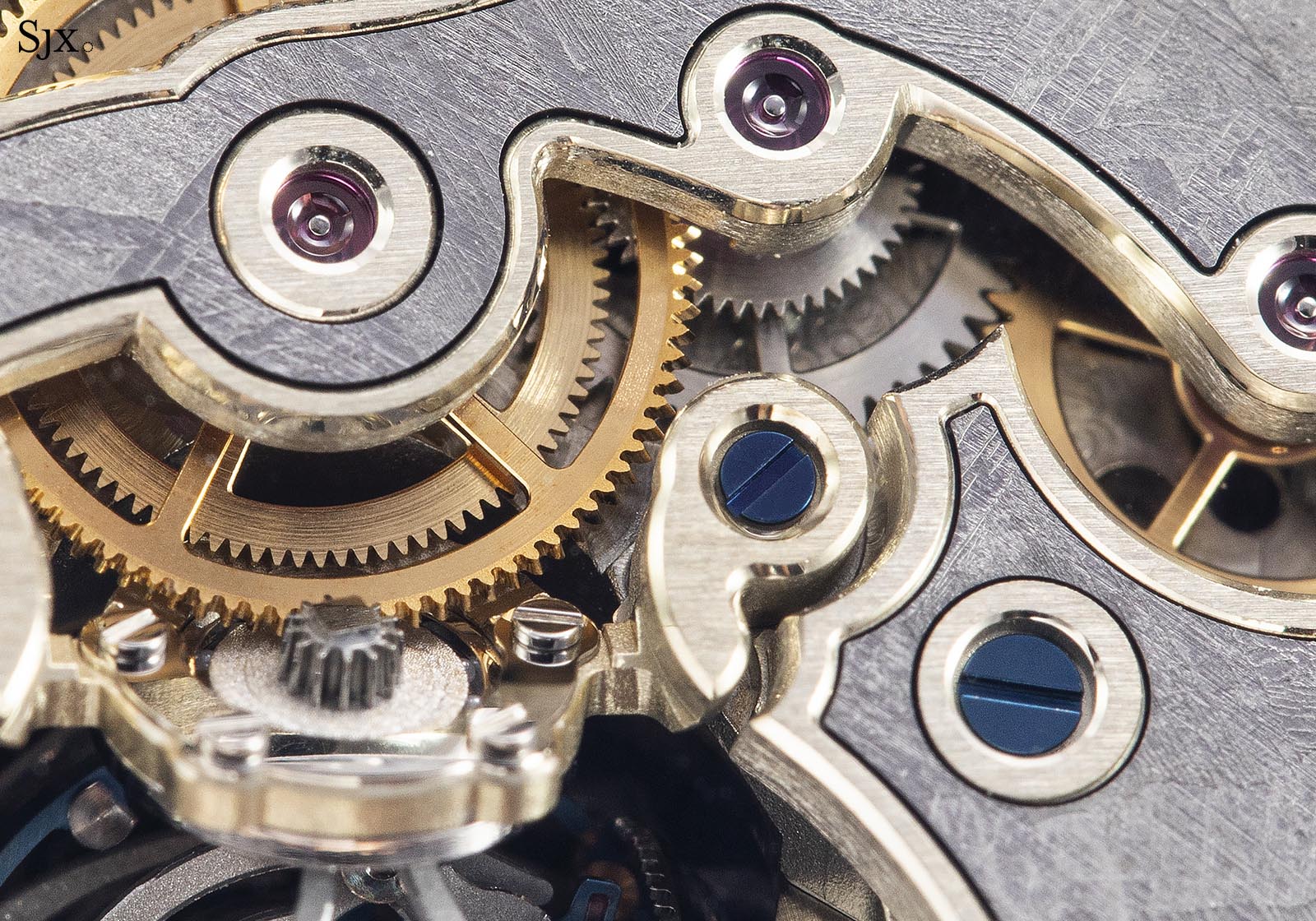
The finishing doesn’t feel elaborate or extravagant enough for a watch of this price, but that is probably secondary to the unique movement architecture, complications, and importantly, the generous meteorite panelling on the bridges.
But as it is on the front, the tolerances of the meteorite panels are slightly wider than that of the bridges, leading to visible gaps between the meteorite and surrounding German silver.
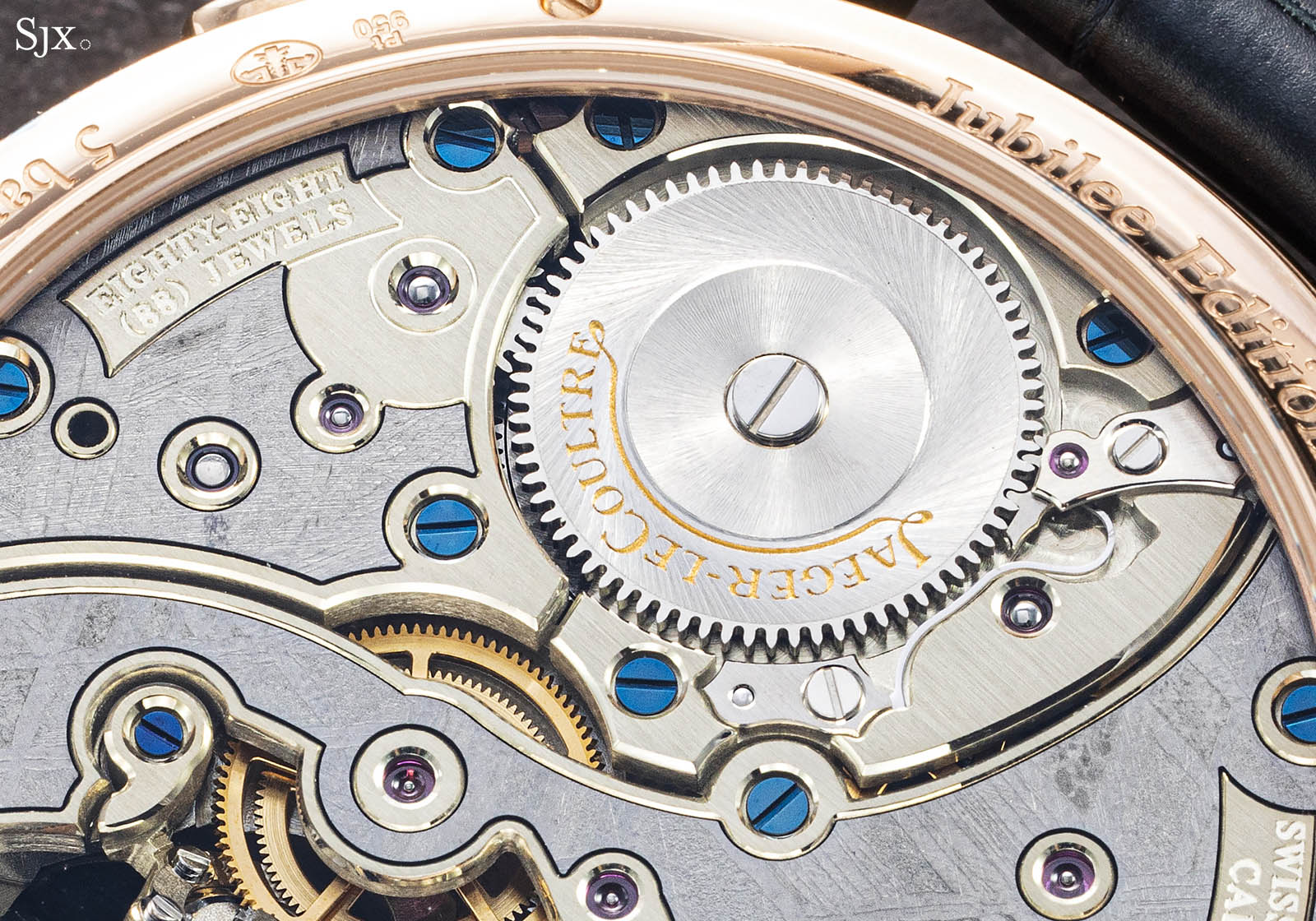
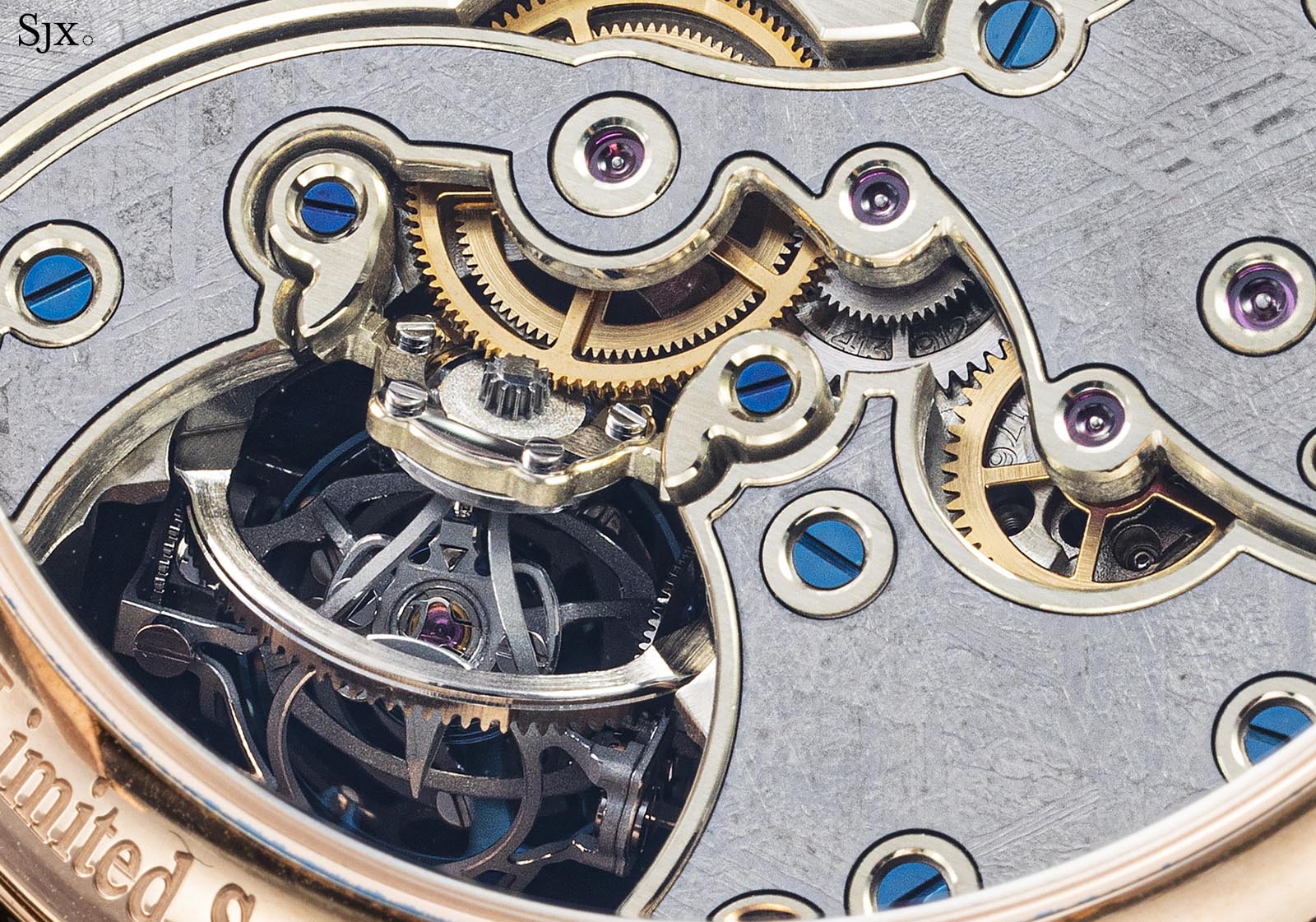
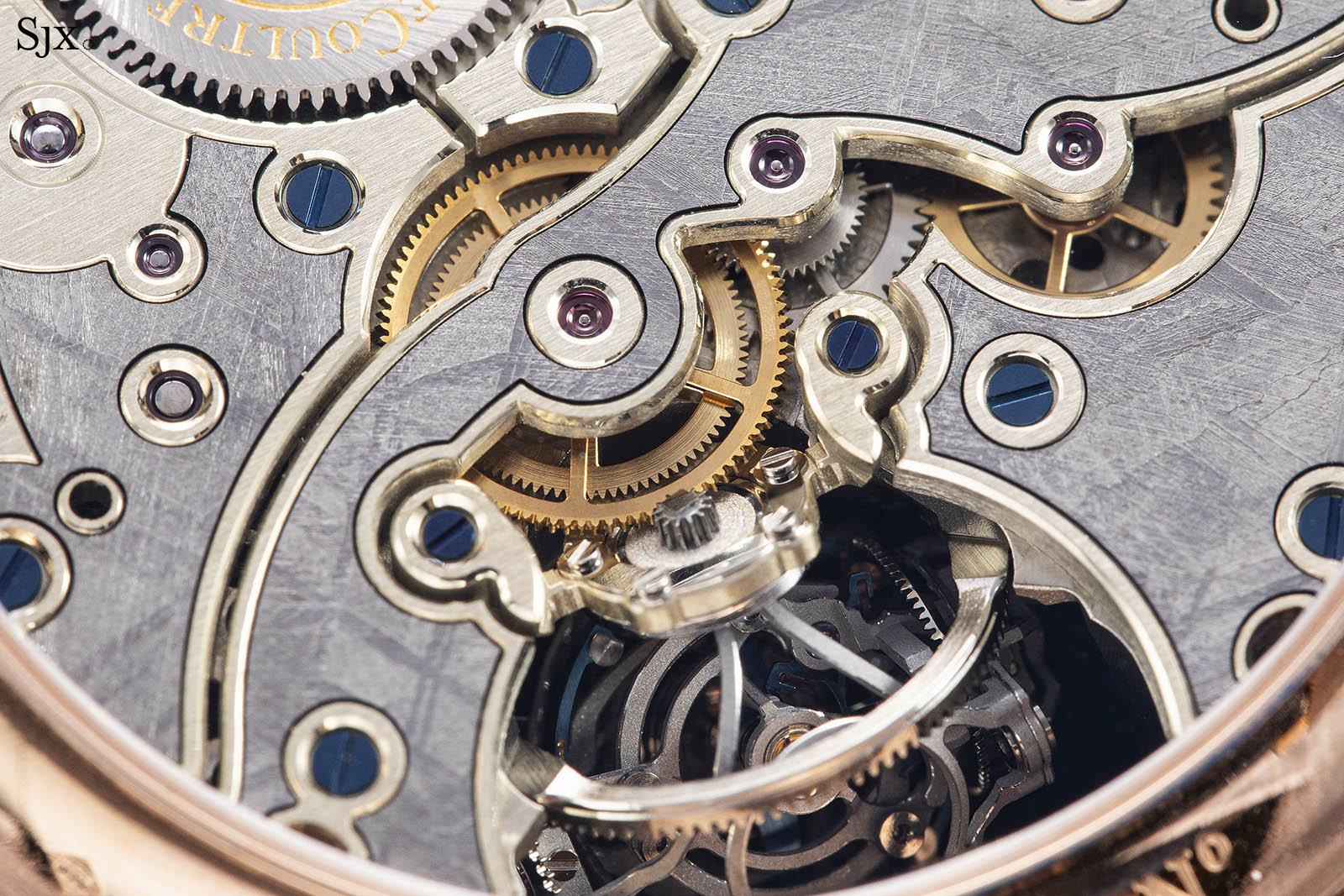
Concluding thoughts
Even after over a decade since its launch, the Gyrotourbillon remains an extremely unique and distinctive take on the tourbillon. And the third version is the ultimate of the series, especially with the spherical hairspring and flying tourbillon construction.
Beside the tourbillon, the watch is also mechanically appealing as it combines two complications in an unusual yet useful and legible manner. And the use of aventurine and meteorite only makes it even more exotic, although the movement decoration should be taken a step further.
But despite all its complexity and appeal, the Gyrotourbillon 3 still feels like a throwback to the 2000s, especially since rivals have edged ahead in terms of complications or finishing (but not both). It’s alleviated by the use of expensive decorative materials, but still feels retro.
Key facts and price
Jaeger-LeCoultre Gyrotourbillon 3 Meteorite
Ref. Q5032441
Diameter: 43.5mm
Height: 15.8mm
Material: 18k pink gold
Water-resistance: 50m
Movement: Calibre 176
Functions: Mono-pusher chronograph with digital minute counter, hours and minutes, day-night indicator
Winding: Manual-wind
Frequency: 28,800, or 4Hz
Power reserve: 45 hours
Strap: Blue alligator
Price: 765,000 Singapore dollars, equivalent to US$550,000
For more information, visit Jaeger-lecoultre.com
Back to top.

